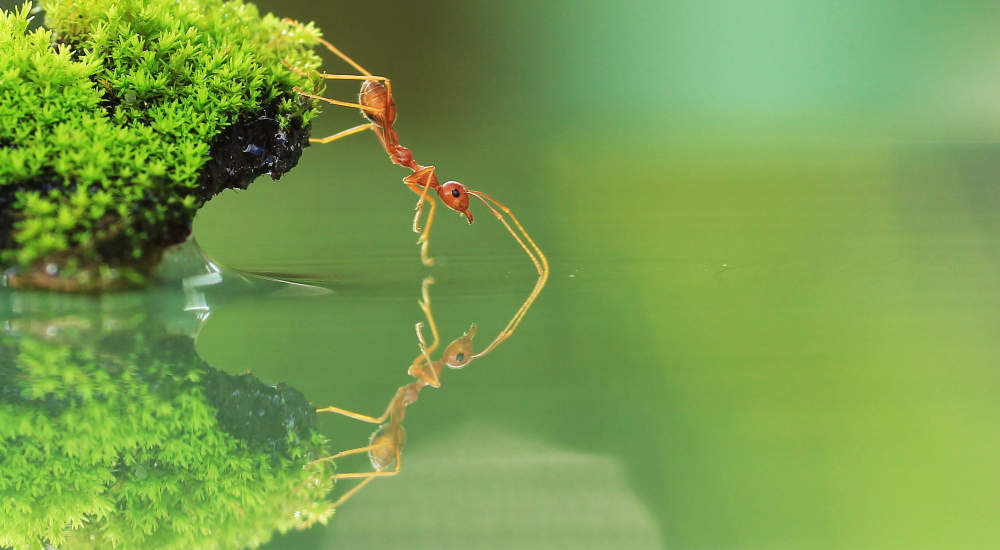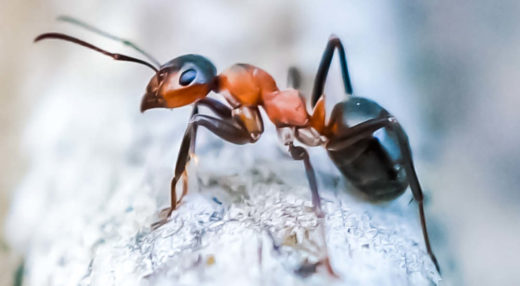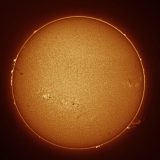How Ants Can Help Us Beat Cancer?

Photo by Sabriamin M | CC BY
As a child, did you put out a few grains of sugar on a Sunday afternoon and wait for ants to find them out? How long did you have to usually wait before one ant became two and two became four and many others gathered around you to take some food home? Even as we laze around trying to kill our time on weekends, ants are working continuously, taking every pinch of flour, every grain of the biscuit dropped and, where possible, even a dying cockroach to their home, inside the narrow cracks of the room.
Ants have always been the epitome of industriousness, team spirit, altruism and the ‘never give up’ attitude. But above all, the simple creatures just humble us all by their discipline. Once the route is established between the food and the nest, hundreds of ants are put to task and continue to work with the singular aim of getting food home as quickly as possible. And all this, without the need of a leader to guide the way or an authoritative figure to enforce the rules. It is simply amazing how everything just falls in place.
By merely bumping their heads into each other for a few seconds, ants manage to pass on multiple messages to each other and decide future course of action. Is their danger around, have foragers brought in new information, do we need more workers to complete the task, should the route be changed, is the nest safe and wonder what else is communicated with this tiny bump, every time an ant takes. Research tells us ants communicate through chemical signatures that are exchanged every time they bump into each other and this is probably the most advanced communication system that we know of, but do not understand.
Researchers have long been amazed by ants and studied various aspects of their social behavior At Stanford University, Professor Deborah Gordon has been studying ants for 28 years and tried to answer the question about how worker ants work without a leader. Her research on ants colonies in different parts of the world has helped her understand how ants interact with each other. Of the many interactions among ants, Professor Gordon is intrigued by the way ants recruit workers for a particular task. If the ant colony is located in a dry arid place, where water is scarce resource, there are very few foragers that actually step out to find food. This is because the probability of finding food is less. So by sending less foragers out, the colony is spending less energy to find food and would not lose much if food is not found on a particular day. Food is an invaluable resource here. If not found in time, the existence of the colony might be at stake. So, once food is located, the forager has to make his way back or send a message through another ant to the colony about the location of the food, so that the gatherers can make their way. This is something we do not understand completely but is an important aspect of how ants manage to survive in such trying conditions.
How ants can help us beat cancer?
A similar event also takes place in patients affected with cancer that we do not completely understand. Even after treatments like chemotherapy and radiation, cancerous cells in the body are able to metastasize, where in they leave their original location (lets say A) and travel to another part of the body, where they find conditions that are ripe for their survival (that we will call B). Once there, these cells manage to send by signals (mostly by the way of certain enzymes/ hormones) that can alert other metastatic cells to arrive at location (B) and colonize it. Called recurrence, this is how cancer has managed to beat us every time. While we are trying to target the disease at one location, it manages to sneak out a few cells in other parts of the body and lay low till the opportunity to thrive presents again. Once we understand this pattern of communication, it will not take us long to design drugs that will act as brakes for this communicating mechanism, thereby helping us fight cancer.
Here is an interesting TED talk from Professor Gordon about this.
Professor Gordon’s lab has been working tirelessly to understand what mechanisms allow ants to recruit workers to a food site, just like how the metastatic cells recruit other cells. Understanding this interaction, will lay the ground work for us to counter cancer cells as well. So, the next time you see the tiny ant making its way to its nest, think of Professor Gordon and her research lab and hope the cure for cancer is just around the corner.
This post was first published on July 12, 2015.









I had a dream vision years ago that told me the cure is in ants. Specifically the tiny black ant was seen in this dream…